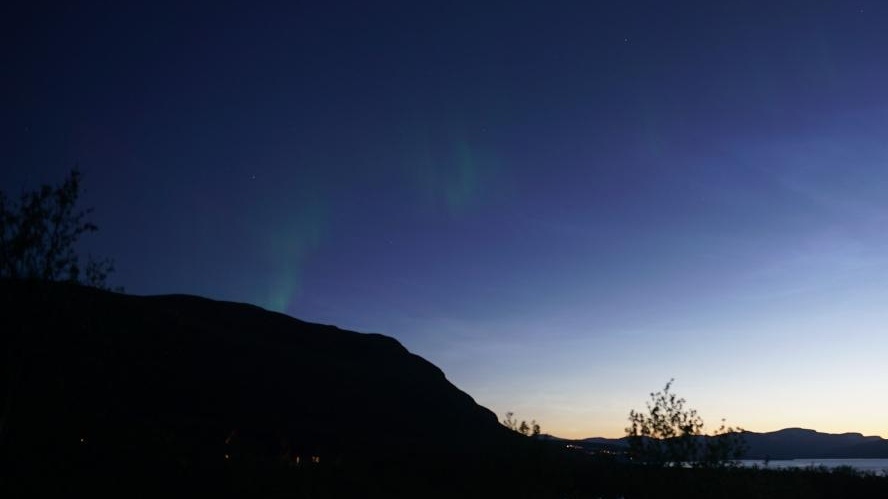Aurora season has begun! Northern lights spotted in the Arctic Circle (photo)
Aurora chasers could be in for a treat as solar activity ramps up.

Aurora season has begun!
A delicate northern lights show more than 124 miles (200 kilometers) inside the Arctic Circle just kicked things off earlier than usual.
A flurry of fast-streaming solar wind over the weekend is the cause of the aurora displays that danced across the sky above the automated camera at the STF Turiststation in Abisko, Sweden on Friday (Aug. 18) at 7:22 p.m. EDT (2322 GMT, 1:22 AM local Swedish time on Aug. 19.)
"It is the earliest our webcam has captured the auroras, " Chad Blakley, founder of the aurora travel tour company Lights over Lapland, told Space.com. "I looked back through our archives, which date back more than 15 years, and this is the earliest 'first of the aurora of the season' we have on record. The previous record was August 20th of 2013, so we beat it by a single day!"
Related: Aurora colors: What causes them and why do they vary?
Though the newly spotted aurora display is rather faint, it also shared the sky with another atmospheric phenomenon — rare night-shining clouds known as noctilucent clouds.
"As luck would have it, the first aurora of the season shared the sky with faint noctilucent clouds, which made the display even more special," Blakley continued.
Breaking space news, the latest updates on rocket launches, skywatching events and more!
Auroras — also known as the northern lights (aurora borealis) or southern lights (aurora australis) — occur near Earth's poles and are caused by the interaction between solar particles and our planet's atmosphere.
When energized particles from the sun slam into Earth's upper atmosphere at speeds of up to 45 million mph (72 million kph), Earth's magnetic field redirects the particles toward the north and south poles. The electrically charged particles then enter Earth's atmosphere, exciting gas atoms and molecules and generating auroras.
Is this early aurora display a sign of things to come?
Solar activity ebbs and flows during an approximately 11-year cycle, driven by the sun's magnetic field and indicated by the frequency and intensity of sunspots visible on the surface. Just this week, a sunspot was so large it was seen by the Perseverance rover on Mars!
Related: Aurora myths, legends and misconceptions
The current Solar Cycle 25 is steadily outpacing predictions and may peak as early as next year. The early auroras spotted in the Arctic over the weekend indicate that solar activity is continuing to ramp up.
The 2023/2024 aurora season should be an impressive one, so now is the perfect time to start planning your trips to see the northern lights. We've rounded up some of the best locations here in our aurora borealis observing guide.

Daisy Dobrijevic joined Space.com in February 2022 having previously worked for our sister publication All About Space magazine as a staff writer. Before joining us, Daisy completed an editorial internship with the BBC Sky at Night Magazine and worked at the National Space Centre in Leicester, U.K., where she enjoyed communicating space science to the public. In 2021, Daisy completed a PhD in plant physiology and also holds a Master's in Environmental Science, she is currently based in Nottingham, U.K. Daisy is passionate about all things space, with a penchant for solar activity and space weather. She has a strong interest in astrotourism and loves nothing more than a good northern lights chase!
